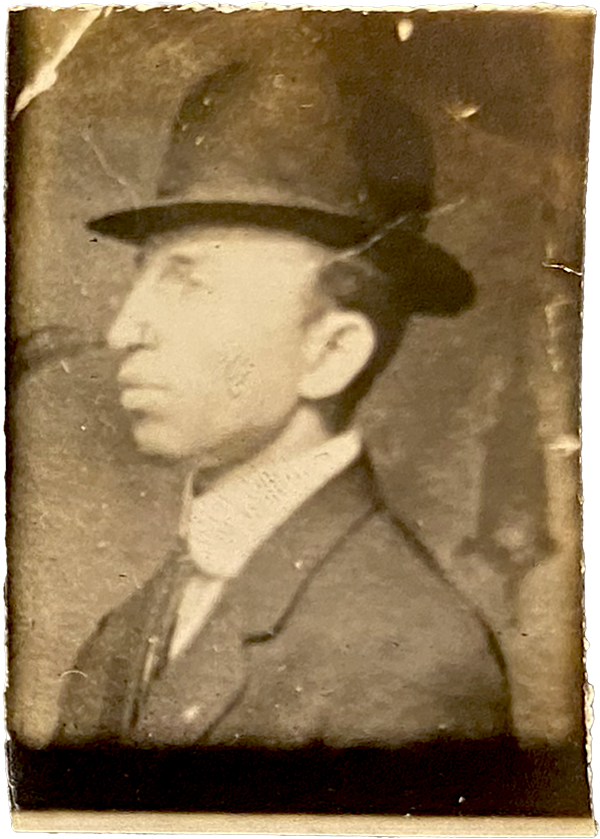Nathan and Lena Goldfarb: National Desertion Bureau Case #M7
The National Desertion Bureau
Known as the “poor man’s divorce,” the desertion of wives and families by husbands and fathers is an aspect of the Jewish American story that has been left out of most discussions of Jewish history. The reality was, however, that thousands of Jewish men abandoned their wives and families during the period of mass immigration at the turn of the 20th century, often leaving them destitute.
As a result, organizations like the National Conference of Jewish Charities had been making note of the problem as early as 1902. By 1905, the United Hebrew Charities (later known as The Jewish Board) addressed the issue directly by creating the Committee for the Protection of Deserted Women and Children. Shortly thereafter, in 1908, The Jewish Daily Forward began printing a frequent column featuring mugshots of deserters to help bring them to justice. Family desertion was clearly a major problem, and there was a genuine, community-wide effort to help the women and children who had been abandoned.
With the understanding that helping the abandoned women and children wasn’t sufficient, a decision was made to go after the perpetrators. The National Conference of Jewish Charities thus created the National Desertion Bureau (NDB) in 1911, the function of which would be to track down Jewish men who had left their wives and families in the lurch and to bring them to justice. This meant forcing them to pay alimony and child support, to provide both civil divorces and gets (Jewish writs of divorce) when demanded, and also to suffer arrest and jail time if they did not agree to support their families.
Runaway Husbands, Desperate Families: The Story of the National Desertion Bureau, an exhibition co-presented by YIVO and The Jewish Board, details the story of the NDB with never-before-seen records, documents, and photographs from the organization’s voluminous archives.
Read one of the case file stories below:
Case #M7: Nathan and Lena Goldfarb

YIVO Archives.
Nathan Goldfarb, a watchmaker who lived in Upper Manhattan with his wife and children, fell in love with a boarder by the name of Minnie Schechter who had been renting a room in the family home. After his wife Lena caught them in the act, he abandoned her and their three young children in December 1912 and ran off with Minnie. Lena, who ran a private restaurant on the Lower East Side, filed an application with the NDB days after Nathan and Minnie disappeared. The NDB arranged for a warrant of arrest at the Domestic Relations Court and requested an indictment for child abandonment. But Goldfarb was not to be found.
The NDB eventually found them in Alameda, California living in one Solomon Garfinkle’s fruit shop and participating in a free love commune. Complicating matters, Garfinkle fell in love with Minnie, and the two were married. This upset Goldfarb, who paid many unannounced visits to their home, resulting in numerous disturbances, which caused Garfinkle and Minnie to move to San Francisco. Goldfarb meanwhile, continued living in the fruit shop. Garfinkle contacted a lawyer in San Francisco who said that if Goldfarb were threatened with arrest, he would probably return to New York and reconcile with his wife. In fact, the NDB received notice from the couple that they had reconciled in April 1914.
Here is a selection of documents from Goldfarb’s case file:












